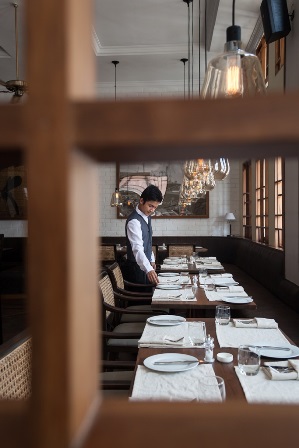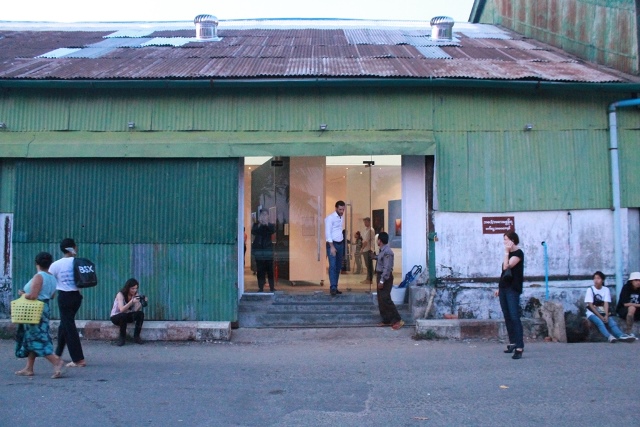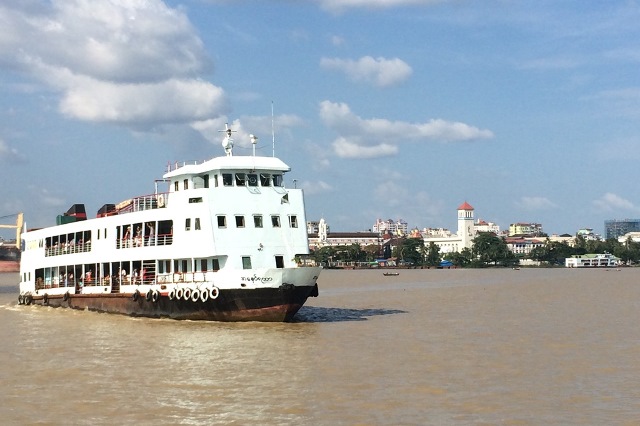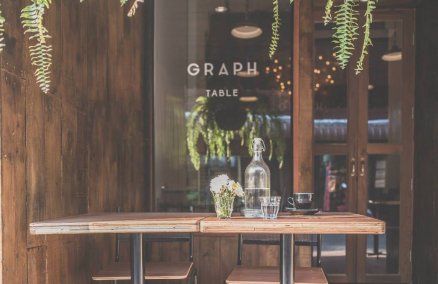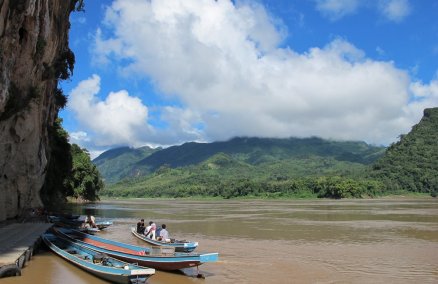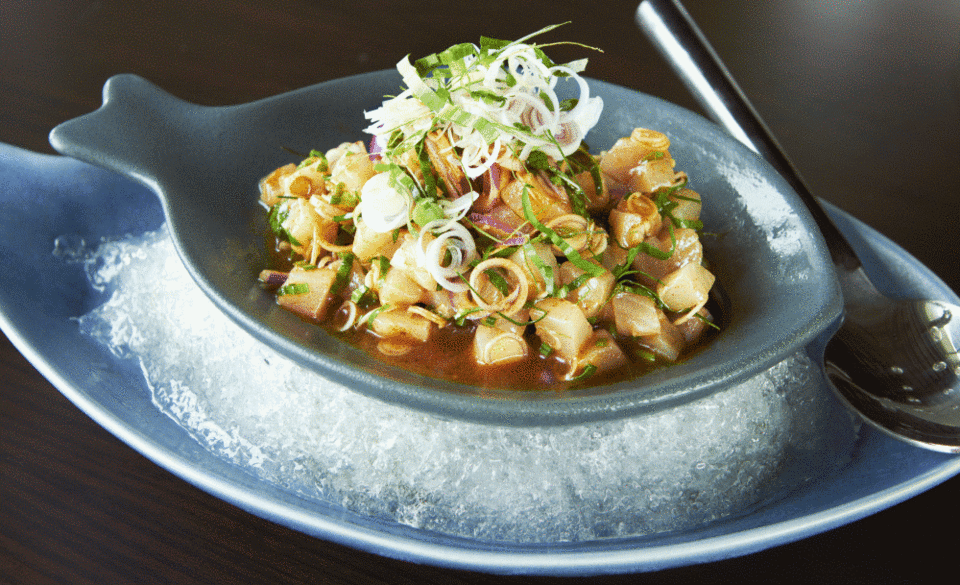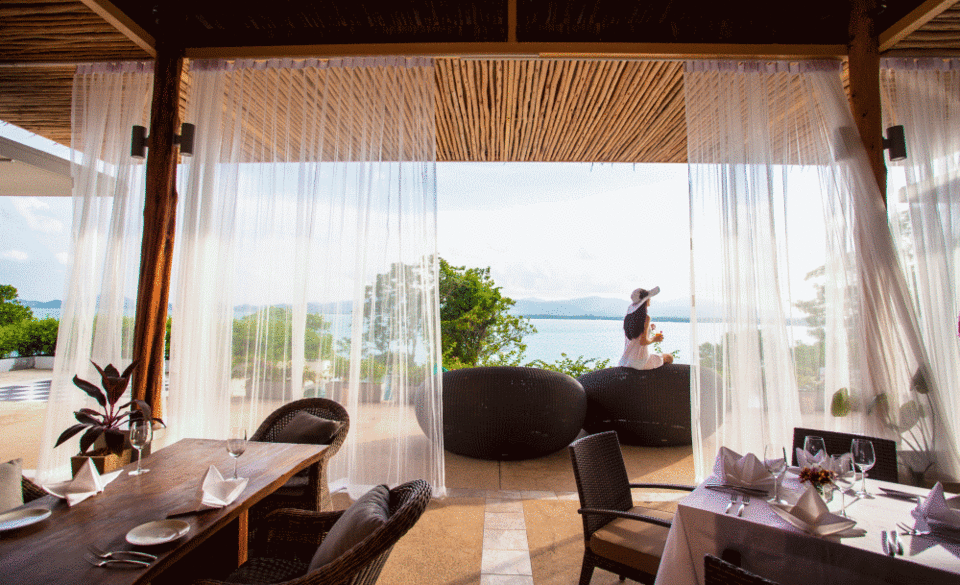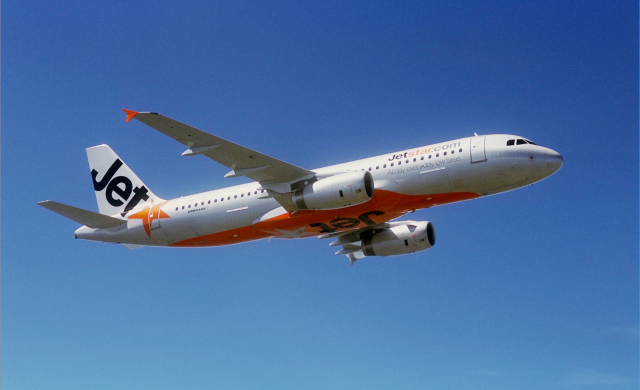1. It's never been easier
You can now get a visa online at evisa.moip.gov.mm for US$50/B1,683 per person. Make sure to apply through this official government website as there are many fake ones trying to rip you off. And there are more airlines operating the route than ever: AirAsia (www.airasia.com) offers four direct flights daily at rates from B2,820 for a round-trip. Nok Air (www.nokair.com) offers two flights daily at about B4,862 for a round-trip.
2. It's not that hard to get a room
Before you visit, you’ll hear that there’s a dearth of decent accommodation in Yangon, and that the influx of overseas investors means what there is is often full. It’s true that the big hotel projects are some way from completion: Hilton and Novotel will likely not open until next year; Pan Pacific is due in 2016; and plans are afoot to eventually reopen a 40-room annex at colonial stalwart The Strand. But we had no problem getting rooms in the city on less than a week’s notice and there are already some interesting new options available.
For years, the Traders was one of the few reliable, international-standard business hotels in town; and after a two-year renovation it relaunched in April 2014 as the upmarket
Sule Shangri-La (#223 Sule Pagoda Rd., +95 (1) 24-2828;
www.shangri-la.com/yangon/suleshangrila; rooms from US$190/B1,226). It’s certainly a convenient spot, right by the Central Railway Station, the two millennia-old Sule Pagoda and the Bogyoke Aung San Market, and only a short walk to the city’s colonial highlights. Their buffet breakfast is pretty decent too, though we also snuck round the corner to another new arrival, the Dutch-run
Bar Boon (380 Bogyoke Aung San Rd.,
www.barboon.nl), whose uninspiring surrounds at the front of a Parkson mall belie what is currently the best coffee you’ll find in Yangon. As well as all the standards, they offer bags of single-estate Myanmar arabica for take-away for US$7.50 (B246).
A short walk north, 32-room newbie
The Loft Hotel (33 Yaw Min Gyi St., Dagon Township; +95 (0) 137-2299;
www.theloftyangon.com) is the first (though doubtless not the last) industrial-chic accommodation option to open here. Rooms (from US$180/B5,898) in what was once a nondescript 60s warehouse are tastefully done and on-site restaurant Sasazu opens later this month.
There are also an increasing number of expat apartment options on
Airbnb, and with a bit of digging you can find some great deals.
Union
3. The nightlife is picking up
There is now a considerably upmarket option in
Union Bar and Grill (42 Strand Rd., Bohtataung; +95 (0) 94 2010-1854;
www.unionyangon.com), the brainchild of UK-transplant Nico Eliot. Taking up the corner of a classy old building just down from the Strand Hotel, Union wouldn’t be at all out of place in London or New York (and, for better or worse, you can’t say that about many places in Yangon). Designed by leading local architect team SPINE, it opened in early 2013 and draws a big crowd on Fridays and Saturdays (the house band is great). House drink specials like the Bloody Pig (tomato, spices and homemade, bacon-infused vodka) go for US$6.50 (B213), and the food menu is a solid mix of burgers, pasta and pizza, and mains like fish in Myanmar beer batter (US$12/B393).
Eliot is also behind new arrivals
Gekko (535 Merchant St., Kyautoda Township; +95 (0) 138-6986;
www.gekkoyangon.com)—a hip, Japanese-inspired yakitori grill, whiskey/sake bar and cocktail lounge (the drinks list comes courtesy of Singapore’s 28 Hong Kong Street) that opened in the 1906-built Sofaer building earlier this year—and the five-month-old
Parami Pizza (11/8 Malikha Rd. and Parami Rd., +95 (0) 166-7449;
www.paramipizza.com) out near Inya Lake.
4. A good guide makes all the difference
Make no mistake: much of Yangon is filthy and falling into ruin. But a sprinkling of civic pride has recently seen both the central People’s Park renovated (it’s a great spot for views of what is far and away the number one tourist draw in Yangon, the stunning Shwedagon Paya), and the launch of a blue plaque initiative to commemorate some 200 significant buildings across the city (the first being colonial-era City Hall and the former Myoma school). It’s just a shame so many of them are in such a sorry state, with little to illuminate their importance.
For that reason you’re best putting yourself in more capable hands. We heard very good things about both
Free Yangon Walks (+95 (0) 92 5053-2068;
www.freeyangonwalks.com), who meet every day at 4pm in the car park opposite City Hall for English-speaking walking tours; and the free late-night cycle tours (15,000 kyats for bike rental) departing from
Bike World (10/F, Khapaung Rd.; +95 (0)152-7109;
www.cyclingmyanmar.com) at 10pm every Friday. And hopping on the Circle Line train from the Central Railway Station for all or part of its three hour loop around the city (200 kyat/B6.34) is perhaps the very best way to see parts of Yangon yet untouched by the gold rush.
Whatever you do, don’t make the mistake of thinking a cab is the answer. Drivers are unfailingly honest and rates are incredibly cheap (the 45-minute/one hour trip to or from the airport is just 9,000 kyat/B285), but unless it’s late at night there’s a depressingly high chance you’ll get stuck in traffic for a very long time.
5. The artists are out in the open
For a country that’s been repressed for so long, Burmese art is often strikingly contemporary. And these days there are more and more outlets for talented artists.
The most interesting new arrival is
TS1 (between Lanthit and Kaing Dan jetties, Seik Kan Township; +95 (0) 92 5006-4694;
www.ts1yangon.com), a pop-up gallery, retail space (called Myanmar Made) and upcoming restaurant down by the river in an old transit shed. (Naturally, it’s already been featured in Monocle.) Opened in April of this year by young Burmese entrepreneur Ivan Pun, it’s an evocative space, right by the still-fully-functioning docks. It also happens to be beside an outdoor “beer station” visited by Anthony Bourdain in his Parts Unknown show—which we’ll admit is the real reason we stumbled across it.
Across town (not far from Parami Pizza), is the year-old
Witness Yangon (3/F, Pyan Hlwar Bldg., 4A Parami Rd., +95 (0) 93173-6154;
www.witnessyangon.com), a space for exhibiting and training photographers and filmmakers. It’s an initiative of non-profit group Myanmar Deitta and already earning a reputation for the kind of shows that would have been unthinkable here even just a few years ago. Last month saw screenings of a documentary on Thailand’s slave fishermen and 2008’s Burma VJ: Reporting from a Closed Country; while the &Proud photo show earlier this year focused on Vietnam and Myanmar’s LGBT communities.
Essentials
CURRENCY
The exchange rate is currently 800 kyat to B25. Contrary to what many guidebooks tell you, almost no one insists on US dollar payments anymore (finding pristine notes, which are all they’ll accept, is a pain anyway). Just take kyat and you’ll be fine. 1,000 kyat is roughly US$1 anyway so it’s not hard to do the math.
VISA
Don’t be confused by the talk of visa on arrival—that’s only for business visas, provided you have a letter of invitation. Just get a tourist visa from the embassy before you go. The embassy is conveniently located a short walk from BTS Surasak. For visa enquiries, contact 02-234-4698.
Out of town
A world away from the bustle of downtown Yangon, the paddy fields of Dalla are only 15 minutes on the ferry. Boats leave from the jetty opposite The Strand (US$4/B131 return) and it’s easy to find a rickshaw or motorcycle driver (US$5/B164 for one hour, ($6.25/B205) on the other side to take you around the local market, a small monastery, some fishing communities and a “bamboo village,” home to people relocated after 2008’s Cyclone Nargis.










